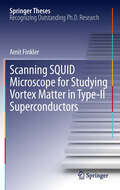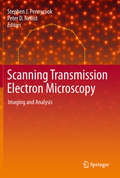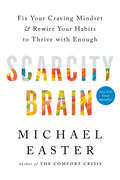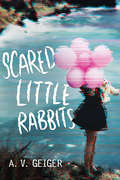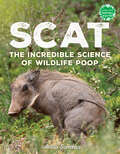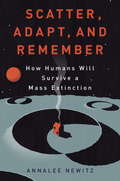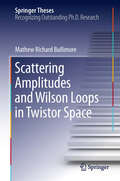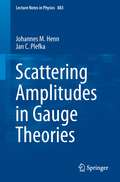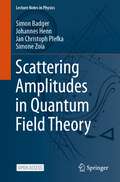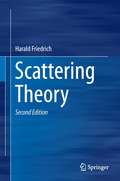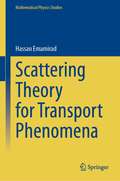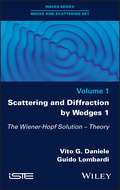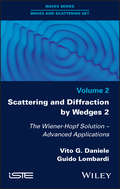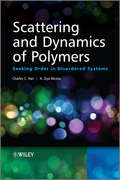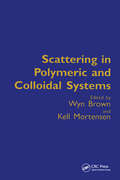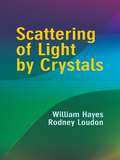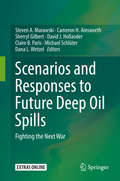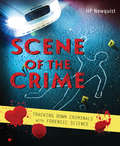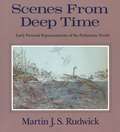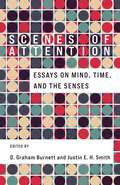- Table View
- List View
Scanning SQUID Microscope for Studying Vortex Matter in Type-II Superconductors
by Amit FinklerCommon methods of local magnetic imaging display either a high spatial resolution and relatively poor field sensitivity (MFM, Lorentz microscopy), or a relatively high field sensitivity but limited spatial resolution (scanning SQUID microscopy). Since the magnetic field of a nanoparticle or nanostructure decays rapidly with distance from the structure, the achievable spatial resolution is ultimately limited by the probe-sample separation. This thesis presents a novel method for fabricating the smallest superconducting quantum interference device (SQUID) that resides on the apex of a very sharp tip. The nanoSQUID-on-tip displays a characteristic size down to 100 nm and a field sensitivity of 10^-3 Gauss/Hz^(1/2). A scanning SQUID microsope was constructed by gluing the nanoSQUID-on-tip to a quartz tuning-fork. This enabled the nanoSQUID to be scanned within nanometers of the sample surface, providing simultaneous images of sample topography and the magnetic field distribution. This microscope represents a significant improvement over the existing scanning SQUID techniques and is expected to be able to image the spin of a single electron.
Scanning Transmission Electron Microscopy
by Stephen J. Pennycook Peter D. NellistScanning transmission electron microscopy has become a mainstream technique for imaging and analysis at atomic resolution and sensitivity, and the authors of this book are widely credited with bringing the field to its present popularity. Scanning Transmission Electron Microscopy(STEM): Imaging and Analysis will provide a comprehensive explanation of the theory and practice of STEM from introductory to advanced levels, covering the instrument, image formation and scattering theory, and definition and measurement of resolution for both imaging and analysis. The authors will present examples of the use of combined imaging and spectroscopy for solving materials problems in a variety of fields, including condensed matter physics, materials science, catalysis, biology, and nanoscience. Therefore this will be a comprehensive reference for those working in applied fields wishing to use the technique, for graduate students learning microscopy for the first time, and for specialists in other fields of microscopy.
Scanning Tunneling Spectroscopy of Magnetic Bulk Impurities
by Henning PrüserMagnetic impurities in a non-magnetic host metal have been actively explored in condensed matter physics in recent last decades. From both fundamental and applied viewpoints these systems are very interesting because they can exhibit strong electronic correlations that give rise to various fascinating phenomena beyond the single particle picture. Up to now our understanding of the underlying processes remains limited due to difficulties involved in measuring these systems on a microscopic scale. With their unique control, scanning tunneling microscopy (STM) and spectroscopy (STS) allow for the first time investigations of phenomena occurring on very small length and energy scales. Here, single magnetic iron and cobalt atoms embedded beneath a metal surface are investigated using these techniques. In particular, the transition from single impurity Kondo physics to two interacting impurities is studied in real space. This thesis contains a comprehensive description of the STM /STS technique, sub-surface impurities, as well as single- and two-impurity Kondo physics - and as such offers a valuable introduction to newcomers to the field.
Scarcity Brain: Fix Your Craving Mindset and Rewire Your Habits to Thrive with Enough
by Michael Easter&“Reveals the biological and evolutionary foundations behind your brain&’s fixations, so you can stop seeking and start living.&”—Melissa Urban, Whole30 CEO and New York Times bestselling author of The Book of Boundaries &“Michael Easter&’s genius is that he puts data around the edges of what we intuitively believe. His work has inspired many to change their lives for the better.&”—Dr. Peter Attia, #1 New York Times bestselling author of OutliveAre we hardwired to crave more? From food and stuff to information and influence, why can&’t we ever get enough?Michael Easter, author of The Comfort Crisis and one of the world&’s leading experts on behavior change, shows that the problem isn&’t you. The problem is your scarcity mindset, left over from our ancient ancestors. They had to constantly seek and consume to survive because vital survival tools like food, material goods, information, and power were scarce and hard to find. But with our modern ability to easily fulfill our ancient desire for more, our hardwired &“scarcity brain&” is now backfiring. And new technology and institutions—from dating and entertainment apps to our food and economic systems—are exploiting our scarcitybrain. They&’re bombarding us with subversive &“scarcitycues,&” subtle triggers that lead us into low-reward cravings that hurt us in the long run. Scarcity cues can be direct and all-encompassing, like a sagging economy. Or they can be subtle and slight, like our neighbor buying a shiny new car.Easter traveled the world to consult with remarkable innovators and leading scientists who are finding surprising solutions for our scarcity brain. He discovered simple tactics that can move us towards an abundance mindset, cement healthy habits, and allow us to live our lives to the fullest and appreciate what we have, including how to:• Detect hidden scarcity cues to stop cravings before they start, from a brilliant slot machine designer in a Las Vegas casino laboratory• Turn alone time into the ultimate happiness hack, from artisanal coffee-making Benedictine monks• Reignite your exploration gene for a more exciting and fulfilling life, from an astronaut onboard the International Space Station• Reframe how we think about and fix addiction and bad habits, from Iraq&’s chief psychiatrist• Recognize when you have enough, from a woman who left a million-dollar career path to adventure the worldOur world is overloaded with everything we&’re built to crave. The fix for scarcity brain isn&’t to blindly aim for less. It&’s to understand why we crave more in the first place, shake our worst habits, and use what we already have better. Then we can experience life in a new way—a more satisfying way.
Scared Little Rabbits
by A. V. GeigerWe stand in a tight cluster, high above the lake. One-by-one, we made our way up the narrow trail from the edge of campus. Now, we wait shoulder to shoulder behind the police tape. Nineteen summer students. All but one. <P><P>When Nora gets accepted into her dream summer program at the prestigious Winthrop Academy, she jumps at the chance to put her coding skills to use. But then a fellow student goes missing-and the tech trail for the crime leads back to Nora. Running scared, Nora must race to clear her name and uncover the sordid truth...or she might be the next to disappear.
Scat: The Incredible Science of Wildlife Poop (Books for a Better Earth)
by Anita SanchezDiscover how poop can actually help protect our planet in this nonfiction book on the nutrient cycle and scientific problem solving.What could be more revolting, useless, and downright disgusting than poop? But in nature&’s endless and complex cycles, there&’s no such thing as waste. The poop of wild animals is full of surprising power: it can be food, shelter, a way for creatures to communicate, and more. For scientists, scat can reveal clues about how animals are responding to climate change threats.From researchers in India using tiger poop to track the endangered big cat to scientists in Mexico using bat guano to help replant a forest destroyed by fire, Scat shows how scientists are getting creative when it comes to studying animals and protecting ecosystems from climate change.Award-winning nonfiction author Anita Sanchez&’s writing is clear, concise, and lightly punny, providing readers with an accessible introduction to the nutrient cycle and the world of animal poop that is aligned with Next Generation Science Standards. Back matter includes a glossary, a photo guide to common animal scat, and more. A Books for a Better Earth™ TitleA Junior Library Guild Gold Standard Selection
Scatter, Adapt, and Remember
by Annalee NewitzIn its 4.5 billion-year history, life on Earth has been almost erased at least half a dozen times: shattered by asteroid impacts, entombed in ice, smothered by methane, and torn apart by unfathomably powerful megavolcanoes. And we know that another global disaster is eventually headed our way. Can we survive it? How?As a species, Homo sapiens is at a crossroads. Study of our planet's turbulent past suggests that we are overdue for a catastrophic disaster, whether caused by nature or by human interference.It's a frightening prospect, as each of the Earth's past major disasters--from meteor strikes to bombardment by cosmic radiation--resulted in a mass extinction, where more than 75 percent of the planet's species died out. But in Scatter, Adapt, and Remember, Annalee Newitz, science journalist and editor of the science Web site io9.com explains that although global disaster is all but inevitable, our chances of long-term species survival are better than ever. Life on Earth has come close to annihilation--humans have, more than once, narrowly avoided extinction just during the last million years--but every single time a few creatures survived, evolving to adapt to the harshest of conditions. This brilliantly speculative work of popular science focuses on humanity's long history of dodging the bullet, as well as on new threats that we may face in years to come. Most important, it explores how scientific breakthroughs today will help us avoid disasters tomorrow. From simulating tsunamis to studying central Turkey's ancient underground cities; from cultivating cyanobacteria for "living cities" to designing space elevators to make space colonies cost-effective; from using math to stop pandemics to studying the remarkable survival strategies of gray whales, scientists and researchers the world over are discovering the keys to long-term resilience and learning how humans can choose life over death. Newitz's remarkable and fascinating journey through the science of mass extinctions is a powerful argument about human ingenuity and our ability to change. In a world populated by doomsday preppers and media commentators obsessively forecasting our demise, Scatter, Adapt, and Remember is a compelling voice of hope. It leads us away from apocalyptic thinking into a future where we live to build a better world--on this planet and perhaps on others. Readers of this book will be equipped scientifically, intellectually, and emotionally to face whatever the future holds.
Scattering Amplitudes and Wilson Loops in Twistor Space
by Mathew Richard BullimoreScattering amplitudes are fundamental and rich observables in quantum field theory. Based on the observation that, for massless particles of spin-one or more, scattering amplitudes are much simpler than expected from traditional Feynman diagram techniques, the broad aim of this work is to understand and exploit this hidden structure. It uses methods from twistor theory to provide new insights into the correspondence between scattering amplitudes in supersymmetric Yang-Mills theory and null polygonal Wilson loops. By additionally exploiting the symmetries of the problem, the author succeeds in developing new ways of computing scattering amplitudes.
Scattering Amplitudes in Gauge Theories
by Johannes M. Henn Jan C. PlefkaAt the fundamental level, the interactions of elementary particles are described by quantum gauge field theory. The quantitative implications of these interactions are captured by scattering amplitudes, traditionally computed using Feynman diagrams. In the past decade tremendous progress has been made in our understanding of and computational abilities with regard to scattering amplitudes in gauge theories, going beyond the traditional textbook approach. These advances build upon on-shell methods that focus on the analytic structure of the amplitudes, as well as on their recently discovered hidden symmetries. In fact, when expressed in suitable variables the amplitudes are much simpler than anticipated and hidden patterns emerge. These modern methods are of increasing importance in phenomenological applications arising from the need for high-precision predictions for the experiments carried out at the Large Hadron Collider, as well as in foundational mathematical physics studies on the S-matrix in quantum field theory. Bridging the gap between introductory courses on quantum field theory and state-of-the-art research, these concise yet self-contained and course-tested lecture notes are well-suited for a one-semester graduate level course or as a self-study guide for anyone interested in fundamental aspects of quantum field theory and its applications. The numerous exercises and solutions included will help readers to embrace and apply the material present ed in the main text.
Scattering Amplitudes in Gauge Theory and Gravity
by Henriette Elvang Yu-Tin HuangProviding a comprehensive, pedagogical introduction to scattering amplitudes in gauge theory and gravity, this book is ideal for graduate students and researchers. It offers a smooth transition from basic knowledge of quantum field theory to the frontier of modern research. Building on basic quantum field theory, the book starts with an introduction to the spinor helicity formalism in the context of Feynman rules for tree-level amplitudes. The material covered includes on-shell recursion relations, superamplitudes, symmetries of N=4 super Yang-Mills theory, twistors and momentum twistors, Grassmannians, and polytopes. The presentation also covers amplitudes in perturbative supergravity, 3D Chern-Simons matter theories, and color-kinematics duality and its connection to 'gravity=(gauge theory)x(gauge theory)'. Basic knowledge of Feynman rules in scalar field theory and quantum electrodynamics is assumed, but all other tools are introduced as needed. Worked examples demonstrate the techniques discussed, and over 150 exercises help readers absorb and master the material.
Scattering Amplitudes in Quantum Field Theory (Lecture Notes in Physics #1021)
by Simone Zoia Simon Badger Johannes Henn Jan Christoph PlefkaThis open access book bridges a gap between introductory Quantum Field Theory (QFT) courses and state-of-the-art research in scattering amplitudes. It covers the path from basic definitions of QFT to amplitudes, which are relevant for processes in the Standard Model of particle physics. The book begins with a concise yet self-contained introduction to QFT, including perturbative quantum gravity. It then presents modern methods for calculating scattering amplitudes, focusing on tree-level amplitudes, loop-level integrands and loop integration techniques. These methods help to reveal intriguing relations between gauge and gravity amplitudes and are of increasing importance for obtaining high-precision predictions for collider experiments, such as those at the Large Hadron Collider, as well as for foundational mathematical physics studies in QFT, including recent applications to gravitational wave physics.These course-tested lecture notes include numerous exercises with solutions. Requiring only minimal knowledge of QFT, they are well-suited for MSc and PhD students as a preparation for research projects in theoretical particle physics. They can be used as a one-semester graduate level course, or as a self-study guide for researchers interested in fundamental aspects of quantum field theory.
Scattering Methods in Complex Fluids
by Sow-Hsin Chen Piero TartagliaSummarising recent research on the physics of complex liquids, this in-depth analysis examines the topic of complex liquids from a modern perspective, addressing experimental, computational and theoretical aspects of the field. Selecting only the most interesting contemporary developments in this rich field of research, the authors present multiple examples including aggregation, gel formation and glass transition, in systems undergoing percolation, at criticality, or in supercooled states. Connecting experiments and simulation with key theoretical principles, and covering numerous systems including micelles, micro-emulsions, biological systems, and cement pastes, this unique text is an invaluable resource for graduate students and researchers looking to explore and understand the expanding field of complex fluids.
Scattering Theory
by Harald FriedrichThis book presents a concise and modern coverage of scattering theory. It is motivated by the fact that experimental advances have shifted and broadened the scope of applications where concepts from scattering theory are used, e.g. to the field of ultracold atoms and molecules, which has been experiencing enormous growth in recent years, largely triggered by the successful realization of Bose-Einstein condensates of dilute atomic gases in 1995. In the present treatment, special attention is given to the role played by the long-range behaviour of the projectile-target interaction, and a theory is developed, which is well suited to describe near-threshold bound and continuum states in realistic binary systems such as diatomic molecules or molecular ions. The level of abstraction is kept as low as at all possible, and deeper questions related to mathematical foundations of scattering theory are passed by. The book should be understandable for anyone with a basic knowledge of nonrelativistic quantum mechanics. It is intended for advanced students and researchers, and it is hoped that it will be useful for theorists and experimentalists alike.
Scattering Theory for Transport Phenomena (Mathematical Physics Studies)
by Hassan EmamiradThe scattering theory for transport phenomena was initiated by P. Lax and R. Phillips in 1967. Since then, great progress has been made in the field and the work has been ongoing for more than half a century. This book shows part of that progress. The book is divided into 7 chapters, the first of which deals with preliminaries of the theory of semigroups and C*-algebra, different types of semigroups, Schatten–von Neuman classes of operators, and facts about ultraweak operator topology, with examples using wavelet theory.Chapter 2 goes into abstract scattering theory in a general Banach space. The wave and scattering operators and their basic properties are defined. Some abstract methods such as smooth perturbation and the limiting absorption principle are also presented. Chapter 3 is devoted to the transport or linearized Boltzmann equation, and in Chapter 4 the Lax and Phillips formalism is introduced in scattering theory for the transport equation. In their seminal book, Lax and Phillips introduced the incoming and outgoing subspaces, which verify their representation theorem for a dissipative hyperbolic system initially and also matches for the transport problem. By means of these subspaces, the Lax and Phillips semigroup is defined and it is proved that this semigroup is eventually compact, hence hyperbolic. Balanced equations give rise to two transport equations, one of which can satisfy an advection equation and one of which will be nonautonomous. For generating, the Howland semigroup and Howland’s formalism must be used, as shown in Chapter 5. Chapter 6 is the highlight of the book, in which it is explained how the scattering operator for the transport problem by using the albedo operator can lead to recovery of the functionality of computerized tomography in medical science. The final chapter introduces the Wigner function, which connects the Schrödinger equation to statistical physics and the Husimi distribution function. Here, the relationship between the Wigner function and the quantum dynamical semigroup (QDS) can be seen.
Scattering and Diffraction by Wedges 1: The Wiener-Hopf Solution - Theory
by Vito G. Daniele Guido LombardiThe book has a dual purpose. The first is to expose a general methodology to solve problems of electromagnetism in geometries constituted of angular regions. The second is to bring the solutions of some canonical problems of fundamental importance in modern electromagnetic engineering with the use of the Wiener-Hopf technique. In particular, the general mathematical methodology is very ingenious and original. It is based on sophisticated and attractive procedures exploiting simple and advanced properties of analytical functions. Once the reader has acquired the methodology, they can easily obtain the solution of the canonical problems reported in the book. The book can be appealing also to readers who are not directly interested in the detailed mathematical methodology and/ or in electromagnetics. In fact the same methodology can be extended to acoustics and elasticity problems. Moreover, the proposed practical problems with their solutions constitute a list of reference solutions and can be of interest in engineering production in the field of radio propagations, electromagnetic compatibility and radar technologies.
Scattering and Diffraction by Wedges 2: The Wiener-Hopf Solution - Advanced Applications
by Vito G. Daniele Guido LombardiThe book has a dual purpose. The first is to expose a general methodology to solve problems of electromagnetism in geometries constituted of angular regions. The second is to bring the solutions of some canonical problems of fundamental importance in modern electromagnetic engineering with the use of the Wiener-Hopf technique. In particular, the general mathematical methodology is very ingenious and original. It is based on sophisticated and attractive procedures exploiting simple and advanced properties of analytical functions. Once the reader has acquired the methodology, she/he can easily obtain the solution of the canonical problems reported in the book. The book can be appealing also to readers who are not directly interested in the detailed mathematical methodology and/ or in electromagnetics. In fact the same methodology can be extended to acoustics and elasticity problems. Moreover, the proposed practical problems with their solutions constitute a list of reference solutions and can be of interests in engineering production in the field of radio propagations, electromagnetic compatibility and radar technologies.
Scattering and Dynamics of Polymers: Seeking Order in Disordered Systems
by Charles C. Han A. Ziya AkcasuScattering is a very powerful tool to study the structure of polymers. Written by highly regarded and respected scientists in the field, this book presents the latest developments in the field of scattering in a uniform, systematic manner. This volume arms readers with both theoretical and experimental aspects of the intended area, offering much simplified theoretical explanations on the physics of scattering. The authors provide discussion on applications of experimental techniques. Han and Akcasu begin with a traditional treatment of light scattering from plane waves, followed by consistent application of density (in both real and Fourier space) correlation functions in both space and time. The authors do not distinguish among light, X-ray, and neutron, excepting their scattering length, q-range, coherence and detection differences. Readers can therefore concentrate on exactly the scattering tools they need to use, while theoretical explanation on the physics of scattering can be made much more simplified and uniform. Presents the latest development in the field of scattering in a uniform, systematic manner Arms readers with both theoretical and experimental aspects Gives a much simpler theoretical explanation on the physics of scattering Demonstrates application of experimental techniques
Scattering and Structures
by Bogdan Povh Mitja RosinaQuantum physics may appear complicated, especially if one forgets the "big picture" and gets lost in the details. However, it can become clearer and less tangled if one applies a few fundamental concepts so that simplified approaches can emerge and estimated orders of magnitude become clear. Povh and Rosina's Scattering and Structures presents the properties of quantum systems (elementary particles, nucleons, atoms, molecules, quantum gases, quantum liquids, stars, and early universe) with the help of elementary concepts and analogies between these seemingly different systems. The original German-language edition of this book was written for students preparing for their final oral examination in physics. By and large, the scope of the book in English has been essentially enlarged and thus may also be of interest for physicists in general.
Scattering in Polymeric and Colloidal Systems
by Wyn Brown Kell MortensenThe application of selected scattering methods, in particular light and neutron scattering, to complex polymeric and colloidal systems is discussed. Progress in this area of condensed matter is charted and the book provides insight into the theory and practice of the techniques apploed to a number of diverse problems.
Scattering of Light by Crystals
by William Hayes Rodney LoudonThis authoritative graduate-level text describes the phenomenon of inelastic light scattering by crystals and its use in the investigation of solid-state excitation. Its experimental techniques are common to the study of all types of excitation, and it describes the main components of light-scattering apparatus in detail. 115 figures. 19 tables. 1978 edition.
Scattering of Particles and Radiation in Astrophysical Environments
by Nicholas R. LewkowThis thesis considers the non-equilibrium and energy transfer processes involved in the evolution of astrophysical gases and plasmas. Momentum-energy transfer in collisions of atoms, molecules and ions governs the evolution of interacting astrophysical gas and plasmas. These collisions require an accurate quantum mechanical description and the work presented here develops a unified kinetic and quantum-mechanical model for this consideration. The multi-scale computational approach implemented here takes into account non-thermal distributions of atomic particles and clarifies their role in the evolution of interstellar gas and planetary atmospheres. As shown, the physical parameters of non-thermal distributions strongly depend on the differential cross sections of atomic, molecular and ion collisions. Readers will find a detailed description of the energy relaxation of energetic atoms, produced in the interstellar gas by the solar and stellar wind plasmas. Computation of the non-thermal diffuse background of energetic helium atoms in the heliosphere is also included for evaluation of the contributions from local and cosmic sources and analysis of related satellite observations. Work involving modeling of energetic particle precipitation into planetary atmospheres and formation of the planetary and exoplanetary escape fluxes has been performed with very accurate cross sections, describing momentum-energy transfer processes with high precision. Results of the Monte Carlo simulations, carried out for the Mars atmosphere at different solar conditions, can be used for analysis of observational data for Mars atmospheric escape and investigation into the history of Martian water.
Scenarios and Responses to Future Deep Oil Spills: Fighting the Next War
by Steven A. Murawski Cameron H. Ainsworth Sherryl Gilbert David J. Hollander Claire B. Paris Michael Schlüter Dana L. WetzelIt has often been said that generals prepare for the next war by re-fighting the last. The Deepwater Horizon (DWH) oil spill was unlike any previous – an underwater well blowout 1,500 meters deep. Much has been learned in the wake of DWH and these lessons should in turn be applied to both similar oil spill scenarios and those arising from “frontier” explorations by the marine oil industry. The next deep oil well blowout may be at 3,000 meters or even deeper. This volume summarizes regional (Gulf of Mexico) and global megatrends in marine oil exploration and production. Research in a number of key areas including the behavior of oil and gas under extreme pressure, impacts on biological resources of the deep sea, and the fate of oil and gas released in spills is synthesized. A number of deep oil spills are simulated with detailed computer models, and the likely effects of the spills and potential mitigation measures used to combat them are compared. Recommended changes in policies governing marine oil exploration and development are proposed, as well as additional research to close critical and emerging knowledge gaps. This volume synthesizes state-of-the-art research in deep oil spill behavior and response. It is thus relevant for government and industry oil spill responders, policy formulators and implementers, and academics and students desiring an in-depth and balanced overview of key issues and uncertainties surrounding the quest for deep oil and potential impacts on the environment.
Scene of the Crime: Tracking Down Criminals with Forensic Science
by HP NewquistLearn about the history of forensic science, how to collective and analyze evidence, and get one step closer to being a world-class, crime-solving detective!From the critically acclaimed author of The Book of Chocolate, The Human Body, and From Here to There, comes an all new nonfiction deep dive into forensic science. What is evidence and how do investigators gather it? How do you determine how long a body has been dead? Do fingerprints differ from person to person? How did some of the world's great fictional detectives, like Sherlock Holmes, further the study of forensics? Packed with lively photos, classroom activities, and engaging prose, budding private eyes and scientists will be eager to find the answers to these and other questions in HP Newquist's latest, and to learn about everything from the world's first autopsy in Ancient Rome to the role that DNA plays in solving crimes along the way.
Scenes from Deep Time
by Martin J. RudwickHow did the earth look in prehistoric times? Scientists and artists collaborated during the half-century prior to the publication of Darwin's Origin of Species to produce the first images of dinosaurs and the world they inhabited. Their interpretations, informed by recent fossil discoveries, were the first efforts to represent the prehistoric world based on sources other than the Bible. Martin J. S. Rudwick presents more than a hundred rare illustrations from the eighteenth and nineteenth centuries to explore the implications of reconstructing a past no one has ever seen.
Scenes of Attention: Essays on Mind, Time, and the Senses
by Burnett, D. Graham; Smith, Justin E. H.Are we paying enough attention? At least since the nineteenth century, critics have alleged a widespread and profound failure of attentiveness—to others, to ourselves, to the world around us, to what is truly worthy of focus. Why is there such great anxiety over attention? What is at stake in understanding attention and the challenges it faces?This book investigates attention from a range of disciplinary perspectives, including philosophy, history, anthropology, art history, and comparative literature. Each chapter begins with a concrete scene whose protagonists are trying—and often failing—to attend. Authors examine key moments in the history of the study of attention; pose attention as a philosophical problem; explore the links between attention, culture, and technology; and consider the significance of attention for conceptualizations of human subjectivity. Readers encounter nineteenth-century experiments in boredom, ornithologists conveying sound through field notations, wearable attention-enhancing prosthetics, students using online learning platforms, and inquiries into attention as a cognitive state and moral virtue.Amid mounting concern about digital mediation of experience, the rise of “surveillance capitalism,” and the commodification of attention, Scenes of Attention deepens the thinking that is needed to protect the freedom of attention and the forms of life that make it possible.
